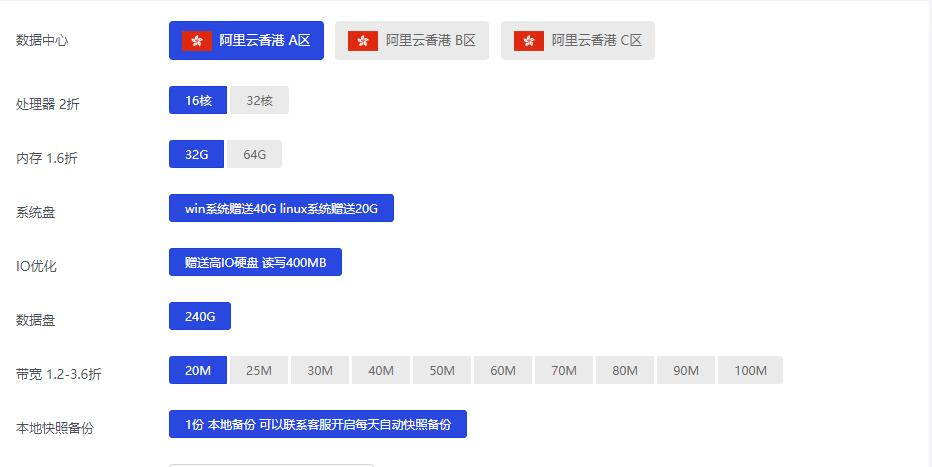midbaht
baht 时间:2021-01-18 阅读:()
VOL.
10,NO.
15,AUGUST2015ISSN1819-6608ARPNJournalofEngineeringandAppliedSciences2006-2015AsianResearchPublishingNetwork(ARPN).
Allrightsreserved.
www.
arpnjournals.
com6435FACTORSCONTRIBUTINGTOURBANHEATISLANDINBANGKOK,THAILANDSigitD.
ArifwidodoDepartmentofLandscapeArchitecture,FacultyofArchitecture,KasetsartUniversity,Bangkok,ThailandE-Mail:sigit.
d@ku.
ac.
thABSTRACTThestudyfocusesonthecharacteristicsofurbanheatisland(UHI)inBangkok,Thailand.
Hourlyairtemperaturedatafromfourweatherstations-oneinruralsiteandthreeinurbansitesforthelastfiveyearareusedtostudythecharacteristicsandintensitiesofUHIinBangkokarea.
TheresultsindicatesthepresenceofurbanheatislandinBangkokanditisincreasingintermsofintensity.
Thestudyrevealsthemaximumintensityofaround6-7°Cisdetectedduringdryseason.
ThemeanannualairtemperatureinBangkokcityishigherby0.
8°Cthanoutsidethecity.
Theweatherconditions(wind,cloud,andprecipitation),anddifferentlandcovertypesarethemajorfactorsgoverningthenearsurfaceurbanheatisland.
Keywords:urbanheatisland,urbanization,urbanclimate,energyconsumption.
INTRODUCTIONUrbanheatisland(UHI)isdefinedasaphenomenonwheretemperaturesofurbanareasarehigherthansurroundingorruralareas(Oke,1982).
AmeasuretoquantifyurbanheatislandusuallyusesthetermUrbanHeatIslandIntensity(UHII)(Kolokotroni,2005),whichisthemaximumtemperaturedifferencebetweenurbanandruralair.
Generally,thelargesturbanheatislandeffect,ormaximumurban-ruralareatemperaturedifferenceoccursmostatnight,threetofivehoursaftersunset,becausetheroadsandothersurfacesabsorbingsolarradiationindaytimereleaseheatinnighttime.
Thus,theruralareascoolofffasterthanurbanareasatnight.
UHIscanprovidebothnegativeandpositiveimpactsforcities.
Ascitiesgrow,theurbanizationcauseslesstreeandvegetationdisplacedbybuildingsandroads,moreskyscrapersandstreetstrapthewindpath,andmoreheatisreleasedfromvehiclesandair-conditioners.
Besides,UHIincreaseshumandiscomfortandairpollutionconcentration.
Moreover,highertemperaturesinurbanheatislandincreaseenergyuseespeciallyforair-conditioninginbuildings.
Thisincreasesmoreairpollutionandenergycostduetotheuseofmorefuel.
TheUHIconditionsincreasetheriskofclimaticandbiophysicalhazardsintheurbanenvironmentsincludingheatstressandheightenacuteandchronicexposuretoairpollutants.
Climatechange,whichiscausedbyincreasedanthropogenicemissionofcarbondioxideandothergreenhousegases,isalongtermeffectwiththepotentialtoaltertheintensity,temporalpattern,andspatialextentfortheUHIinmetropolitanregions(Cynthiaetal,2005).
Onthecontrary,urbanheatislandmaybebeneficialforreducingheatloadsasaresultofreducedenergyuseforheatingconsumptionreduces.
However,thisbenefitdoesnotcountfordevelopingcountries(Arifwidodo,2012).
UHIsalsohavefurtherimpactsonglobalscale;itinfluencesthelong-termtemperaturerecordleadingtodifficultiestodetectglobalclimatechanges.
Thesurfaceheatislandreferstotherelativewarmthofsurfaces.
Thesurfacetemperatureiseasytochange,andthusitshowsmuchgreaterdifferenceinspatialvariabilityandtemporalvariationbetweendayandnightthanairtemperaturedoes.
Themainfactorsthatcausetheappearanceofurbanheatislandincludeweather,geographiclocation,timeofdayandseason,cityform,andcityfunctions(Voogt,2004).
Weather:Calmandclearweathercanleadtothelargestmagnitudeofheatisland.
Increasingwindsdecreaseheatisland,andalsoincreasingcloudsatnight.
Geographiclocation:Thetopographyoftheareasinfluencestheweathersuchaswind.
Forinstance,coastalurbancitiescomeacrosswithcoolingtemperaturesinthesummerduetothecoolerseasurfacetemperatures.
Inwarmhumidclimates,thewetsurfacescanreducetheheatislandmagnitudes.
Timeofdayandseason:Incitieswhicharelocatedinthemidlatitudeshavethestrongestwinterorsummerseasonscanleadtolargemagnitudeofheatislandintropicalcities.
Cityform:Thematerialsinconstruction,thebuildingdimensionsandspacing,thegreenareasarealltheexampleofcityform.
Somebuildingmaterialscanstorealargeamountofheat.
Thereplacementofimperviousorwaterproofedsurfaceleadtothehigherheatislandformation.
Cityfunctions:Theurbanpollutantscomefromenergyuse,andanthropogenicheatcangenerateheatisland.
Forexample,indenselybuildingcitiesthehigh-energyusehasalargeinfluencetoanthropogenicheating.
BANGKOKANDURBANHEATISLANDDevelopmentofBangkokandUrbanHeatIslandBangkokisthecapitalcityofThailandlocatedinthecentralpartofthecountry.
Itisthecenterofindustries,manufacture,economy,commerce,andconstruction.
Thisdrawsalargeamountofpeoplefromalloverthecountryintothecity,leadingtothehighgrowthofurbanizationandindustrialization.
Thepopulationisabout10millionindaytimewhichis16%ofthetotalpopulationofThailand(theBureauofRegistrationDepartmentofProvincialMinistryofInterior,2004).
ThisrapidurbanizationhasledVOL.
10,NO.
15,AUGUST2015ISSN1819-6608ARPNJournalofEngineeringandAppliedSciences2006-2015AsianResearchPublishingNetwork(ARPN).
Allrightsreserved.
www.
arpnjournals.
com6436toseveralenvironmentalproblemssuchasairpollution,waterpollution,landsubsidenceaswellastheproblemsfromthepresenceofurbanheatislandsuchastemperaturerise,highenergyconsumption,andbiophysicalhazardsetc.
In2012,themaximumtemperaturedifferencebetweenurbanandruralareaofBangkokwas7°C,whichhigherthaninthelast10years.
Boonjawatetal(1998)initiallyshowedthepresenceofheatislandinBangkok.
Theurbanheatislandintensity(UHII)betweenChulalongkornUniversity(urbanarea)andAsianInstituteTechnology(ruralarea)wasobservedtobe3.
5°Cduring6.
00-7.
00a.
m.
ThisstudyalsoshowsthesubstantialeffectofseabreezeandsolarradiationonUHI.
SeabreezedecreasestheairtemperatureinthesouthernpartofBangkok.
AnotherstudyshowedtheeffectsoflandcoveronUHIinBangkok.
Komonveeraket(1998)conductedastudybyusingtransformedvegetationindex(TVI).
ThestudyshowedinverserelationshipamongTVI,surfacetemperatures,andlandapplications.
GreenareahadhighTVIandlowsurfacetemperature,onthecontrarythelowTVIandhighsurfacetemperaturecorrespondedtobuildingarea.
ThisstudyalsoshowsthesubstantialeffectofseabreezeandsolarradiationonUHI.
SeabreezedecreasestheairtemperatureinthesouthernpartofBangkok.
However,therearenofurtherdetailempiricalevidencesonthecurrentstatusofUHIseffecttourbanareainBangkok,especiallynowthatthecityisintheprocessofimplementingnewmasterplantoguideitsfuturedevelopment.
Thus,tohaveaspatialdistributiondataandfurtherupdateofmagnitudeofBangkokheatisland,morestudiesshouldbecarriedouttounderstandcurrentUHIscharacteristicsandeffectstourbanareaofBangkok.
Correspondingly,duetotheappearanceofurbanheatislandmanyproblemsarise,hencetheimpactsofurbanheatislandshouldbealsotakenintoconsideration.
IncaseofBangkok,theairconditioningloadisconsideredtohavethelargestshare(almost60%)ofelectricityuse(Arifwidodo,2014).
Therefore,itisimportanttoassessthecurrentstatusofUHIcharacteristicsanditseffectstourbanareafromthemicroclimateperspective.
MeasuringUrbanHeatIslandToidentifyurbanheatisland,thecommonlyusedmethodsaretheurban-ruralweatherstations,auto-traversemethods,computermodelling,andremote-sensingtechniques(Henryetal,1989).
Theurban-ruralstationisthesimplestandmostfrequentlyusedmethodwhichpresentstheairtemperaturebelowtheurbancanopylayer.
Remote-sensingtechniquesofferhighspatialresolutionandeasyrepeatability(Henryetal,1989),butthederivedtemperaturemaybedifferentfromthetruesurfacetemperature.
TheairtemperaturedataarecollectedfromTheMeteorologicalDepartmentinBangkok(3stations)andPathumthaniProvince(1station)tocomparetheurban-ruralcondition.
Table-1showsthetypeofstationanddatacollectedforthestudy.
Table-1.
Weatherstationinthestudy.
Theairtemperaturefrom2008-2012fromallfourstationsarecollectedtounderstandthetemperaturevariationtrendinBangkokin5yearsmovingaverage.
ThesedataarealsousedtounderstandthedailyandannualcourseofUHI.
Table-2summarizedthedataandanalysisdoneinthestudy.
Table2.
TypeofAnalysisandDataSourceUsedintheStudy.
UrbanizationandUHIBangkokisthecapitalofThailandsituatedinthecentralpartofthecountryonthelow-flatplainoftheChaoPhrayaRiverwhichextendstotheGulfofThailand.
Itslatitudeis13°45'northandlongitude100°28'east.
Theelevationisabout2.
31m.
MSL.
Thecityisdividedinto50districtsand154sub-districts.
TotalareaofBangkokisaround1568.
737squarekilometers.
Generally,theclimateofBangkokistropical.
TheweatheriswarmVOL.
10,NO.
15,AUGUST2015ISSN1819-6608ARPNJournalofEngineeringandAppliedSciences2006-2015AsianResearchPublishingNetwork(ARPN).
Allrightsreserved.
www.
arpnjournals.
com6437andhumid,anditisaffectedbymonsoonseason.
Therelativehumidityishighthroughouttheyeararound60to80percent.
Therearethreemainseasons:Rainy(May-October),winter(November-January)andsummer(February-April).
Theaveragewindvelocityis1.
2m/sec(4.
3km/hr).
Theaveragerelativehumidityis73%andtheyearlyaverageprecipitationis1,652mm.
Theannualaverageambienttemperatureisaround33-38°C.
Theabsoluteminimumtemperatureisabout20°andtheabsolutemaximumtemperatureisabout30°C.
Therainyseasontemperatureisaround25-32°C.
Thedryseasontemperatureisaround20-25°Candhotseasontemperatureisaround40-42°C.
TheregisteredpopulationinBangkokincreasedfrom1.
6millionin1958to5.
4millionin1986and5.
6millionin1999.
ThepopulationofBangkokiscloseto5.
78millionaccordingtohouseholdregistrationin2004.
Thisis10%ofthetotalpopulationofThailand.
Thepopulationdensityis3,686persquarekmwiththeincreaseof0.
98%peryear(ArifwidodoandChandrasiri,2013).
Thelong-termannualairtemperaturerecordinBangkokfrom1980-2010showsthatthetemperaturehadbeencoolerincoolseasonandwarmerinhotseason.
Forexample,BangkokMetropolisweathershowsthatthemeanmaximumandminimumannualairtemperaturefrom1980-2012was33°Cand24°Crespectively,andincreasinglinearlyby0.
95°Cand1.
97°C.
OnesignificantfactoraffectingthisincreaseisprobablytherapidurbanizationinBangkok.
Usingthedatafromthesameweatherstation,thedailytemperaturefrom2008-2012iscomparedtoPathumthaniweatherstationtounderstandthedailytemperaturevariationsbetweenurbanandnon-urbanarea.
Theresultshowsthatthetemperaturedifferencesbetweeneachyeararemoreobviousduringwinter.
Thetemperatureseemstobehighereachyearinthesummer,anddecreaseduringwinter.
Table-3showstemperaturedifferencebetweenurbanandruralBangkok.
Theresultindicatesthatthedailyvariationsofurbanheatislandinalldifferentthreeseasonshavesimilartrends.
TheUHIeffectishighaftersunsetaround6-7PMandbeginstoriseduringthenighttimeandreachesitsmaximumvalueat2-4°Cdependingontheseasons.
Table-3.
TemperaturedifferencebetweenurbanandruralBangkok.
PrecipitationandUHIFigure-1showstheeffectofrainfalltoUHIintensityinBangkok.
ItisobservedthattheUHIintensityvarieswithprecipitation.
TheincreaseoftheprecipitationwhichhasthelargestvalueinAugustat230mmcausesagradualdeclineoftheUHIintensitytothelowestintensityof2°C.
Afterthat,astheraindecreasestominimuminDecember(0mm),themagnitudesofheatislandreachtheirmaximum(5°C)inDecember.
Thus,theprecipitationcanbeconsideredasoneofthemostsignificantfactorsgoverningUHIdevelopment,especially,inrainyseason(fromMaytoOctober).
Ontheotherhand,theUHImaycreatetheprecipitationinurbanarea.
Therisingwarmairinurbanareahelpstocreatethecloudswhichresultsinmorerainfallinurbanareaandareaindownwindcities.
Figure-1.
MonthlymaximumUHIintensitybetweenBangkokMetropolis(urban)andPathumthani(non-urban)stationandmonthlyrainfall(mm)in2012.
VOL.
10,NO.
15,AUGUST2015ISSN1819-6608ARPNJournalofEngineeringandAppliedSciences2006-2015AsianResearchPublishingNetwork(ARPN).
Allrightsreserved.
www.
arpnjournals.
com6438PopulationDensityandUHIInsummerandinwinter,3weatherstationsaroundthecenterismuchwarmerthanitssuburb(Pathumthanistation).
Thisisbecausetheyarelocatedinthemostdenselybuild-upareawhichissurroundedbyanumberofbuildingsincludinghotels,hospitals,andgovernmentinstituteswhilethePathumthanistationissituatedawayfromthebuild-uparea.
Figure-2.
RelationshipbetweenpopulationdensityandUHIvariation.
ToshowtherelationshipbetweenpopulationdensityandUHImagnitude,thepopulationdensitydataindistrictofthosestationsarepresentedandplottedinFigure-2.
Therelationshipbetweenthepopulationincityandthemagnitudeofheatislandshowthemaximumurbanheatislandintensityintropicalhotandwetregionis4-9°Cwhenthepopulationisaround1millionto10million.
ThetotalpopulationinBangkokaccordingtohouseholdregistrationwas5.
78millionabout10%ofthetotalpopulationinThailand.
However,thisdoesnotincludethosewhocommuteandliveinBangkokwithoutregistration.
Thesenumbersareestimatedataround3.
2million(DepartmentofCityPlanning,2004).
ThismakesthetotalpopulationofBangkokcitytobealmost9million.
TheBangkokheatislandmagnitudeshouldbeapproximately6.
5°C.
HouseholdEnergyConsumptionandUHIAsurveyconductedbytheNationalStatisticalOfficeofThailand(NSO,2013)showsthattheaverageenergyexpenditureis2,084THBor10.
9%ofthetotalexpenditurewiththeexpenditureonelectricityis607THB(29.
1%ofthetotalenergyexpenditure).
TheaverageelectricityexpenditureinBangkokMetropolitanAreais1,133THB,higherthanotherregioninthecountry.
Thenumberisslightlydifferentwiththeresultfromthesurvey(854.
35THBfortheelectricityexpenditure).
72%ofhouseholdsinthestudyhasAirConditioning(AC)equipmentintheirhousingunits.
ThereisapositivecorrelationbetweenincomeandthenumberofACunitownedinthehouse(two-tailedt-statistics,pBaht)from400householdsamplesinBangkok.
Asexpected,thereisapositivecorrelationbetweenhouseholdenergyconsumptionandCDD.
RegressingmonthlyelectricityconsumptiontogeneratedCDDprofilesresultinginhighcoefficientsofR2(adj.
R2=0.
840;S.
E.
=1.
216;F=0.
000017;p-value=0.
000017).
CONCLUSIONSThisstudyusedhourlyairtemperatureofBangkokarea(urban)andPathumthani(non-urban)toestimatetheurbanheatislandcharacteristics.
Theresultsfromyearlydataofairtemperatureshowsthefollowings.
Duringthelast30yearofairtemperatureobservations(1980-2012),themean,maximum,andminimumannualairtemperatureappeartohaveincreasedlinearlyby1.
74,0.
95,1.
97°Crespectively.
Thisshowsaslightincreaseinmaximumtemperaturesandasignificantincreaseinminimumtemperature.
TheUHIseverityinBangkokisfoundtobehighercomparedtoothermajorcitieswithUHIproblemssuchasShanghai,SanDiego,andSanFrancisco,andisofsimilarrangetoTokyo.
TheUHIeffectismostpronouncedduringthenighttime.
Itbeginstoriseaftersunsetandreachesitsmaximumataboutsunriseduring6-7am.
Itcontinuestodecreasetothelowestmagnitudeoroftenbecomecoolislandphenomenonaround3-6pm.
ThisdevelopmentofUHIsisobservedinallseasons.
Forseasonalvariation,theUHIeffectismostintensiveduringthedryseason,followedbyhotandwetseason.
ThehighestintensitycanbeobservedinDecember(midofcoolseason)around5°Candinsummeraround2-3°C.
Unlikeinwinterandsummer,theUHIintensitybetweenthenighttime(7pm-7am)andmorningtime(7-12am)duringrainyseasonarealmostthesame.
ThestudyshowsthatmanyfactorsgoverntheUHIvariationsincludingcitystructures,population,andweather.
PrecipitationisfoundtobeinverselyproportionaltotheUHImagnitude.
TheareawiththemaximumUHIintensityiscorrespondstothemostdenselybuild-upareawithhighestbuildingandpopulationdensityamongotherstationsusedinthestudy.
Themaximumintensitycouldrangefrom8-10°Cduringthedaytimeduetothesurfacematerialssuchasroad(concreteorasphalts),buildingwalls,orpavedsurfacewarmingfasterthanthesurfacesinruralarea,whichnormallyarecoveredwithgreenareas.
ThestudyalsoexaminestherelationshipbetweenhouseholdenergyconsumptionandUHI.
Theresultshowsthatthehighertherelationshipispositive.
ItmeansthatenergyconsumptionishighintheareawithhighUHIvariationsandtheotherwayaround.
ThisfindingimpliesthatifnotUHIisnotmitigatedproperly,Bangkokwillexperienceasignificantincreaseofhouseholdenergydemand.
VOL.
10,NO.
15,AUGUST2015ISSN1819-6608ARPNJournalofEngineeringandAppliedSciences2006-2015AsianResearchPublishingNetwork(ARPN).
Allrightsreserved.
www.
arpnjournals.
com6439REFERENCES[1]ArifwidodoS.
D.
2012.
ExploringtheEffectofCompactDevelopmentPolicytoUrbanQualityofLifeinBandung,Indonesia,City,CultureandSocietyVol.
3,No.
4,pp.
303-311.
[2]ArifwidodoS.
D.
andChandrasiriO.
2013.
TheRelationshipbetweenHousingTenure,SenseofPlaceandEnvironmentalManagementPractices:ACaseStudyofTwoPrivateLandRentalCommunitiesinBangkok,Thailand,SustainableCitiesandSociety,Vol.
8,No.
1,pp.
16-23.
[3]ArifwidodoS.
D.
2014.
UrbanFormandHouseholdEnergyUseinBandung,Indonesia.
InSridharK.
S.
andWanG.
eds.
UrbanizationinAsia:Governance,InfrastructureandtheEnvironment,India:Springer.
[4]BoonjawatJ.
,NiitsuK.
,KuboS.
,2000.
Urbanheatisland:ThermalpollutionandclimatechangeinBangkok.
JournalofHealthScience,Vol9,No.
1,January-March,pp.
49-55.
[5]CynthiaRosenzweig,WilliamD.
Solecki,LilyParshall,MarkChopping,GregoryPopeandRichardGoldberg.
2005.
Characterizingtheurbanheatislandincurrentandfutureclimate.
GlobalEnvironmentalChangePartB:EnvironmentalHazards,Vol.
6,No.
1,pp.
51-62.
[6]GivoniB.
,1998.
ClimateConsiderationsinBuildingandUrbanDesign,Wiley,USA.
[7]HenryJamesA.
,DicksStevenE.
,WetterquistOrjanF.
,andRoguskiStephenJ.
1989.
Comparisonofsatellite,ground-basedandmonitoringtechniquesforanalyzingtheurbanheatisland.
PhotogrammetricEngineeringandRemoteSensing.
Vol.
55,No.
1,pp.
69-76.
[8]JaureguiE.
1997.
HeatislanddevelopmentinMexicoCity,AtmosphericEnvironment,Vol31,No22,3821-3831.
[9]MikhailA.
L.
andAnatolyA.
I.
2002.
InfluenceofMoscowCityontheairtemperatureincentralRussia.
M.
V.
LomonosovMoscowStateUniversity,Moscow,Russia.
[10]NyukHienWongandChenYu.
Studyofgreenareasandurbanheatislandinatropicalcity.
HabitatInternational,Vol.
29,No.
3,Septemberpp.
547-558.
[11]OkeT.
R.
1982.
Theenergeticbasisofurbanheatisland,.
JournaloftheRoyalMeteorologicalSocietyVol.
108,No.
455,pp.
1–24.
[12]OkeT.
R.
,1995.
Theheatislandoftheurbanboundarylayer:characteristiccausesandeffects.
WindClimateinCities.
KluwerAcademicPublishers,Dordrecht,pp.
81-107.
10,NO.
15,AUGUST2015ISSN1819-6608ARPNJournalofEngineeringandAppliedSciences2006-2015AsianResearchPublishingNetwork(ARPN).
Allrightsreserved.
www.
arpnjournals.
com6435FACTORSCONTRIBUTINGTOURBANHEATISLANDINBANGKOK,THAILANDSigitD.
ArifwidodoDepartmentofLandscapeArchitecture,FacultyofArchitecture,KasetsartUniversity,Bangkok,ThailandE-Mail:sigit.
d@ku.
ac.
thABSTRACTThestudyfocusesonthecharacteristicsofurbanheatisland(UHI)inBangkok,Thailand.
Hourlyairtemperaturedatafromfourweatherstations-oneinruralsiteandthreeinurbansitesforthelastfiveyearareusedtostudythecharacteristicsandintensitiesofUHIinBangkokarea.
TheresultsindicatesthepresenceofurbanheatislandinBangkokanditisincreasingintermsofintensity.
Thestudyrevealsthemaximumintensityofaround6-7°Cisdetectedduringdryseason.
ThemeanannualairtemperatureinBangkokcityishigherby0.
8°Cthanoutsidethecity.
Theweatherconditions(wind,cloud,andprecipitation),anddifferentlandcovertypesarethemajorfactorsgoverningthenearsurfaceurbanheatisland.
Keywords:urbanheatisland,urbanization,urbanclimate,energyconsumption.
INTRODUCTIONUrbanheatisland(UHI)isdefinedasaphenomenonwheretemperaturesofurbanareasarehigherthansurroundingorruralareas(Oke,1982).
AmeasuretoquantifyurbanheatislandusuallyusesthetermUrbanHeatIslandIntensity(UHII)(Kolokotroni,2005),whichisthemaximumtemperaturedifferencebetweenurbanandruralair.
Generally,thelargesturbanheatislandeffect,ormaximumurban-ruralareatemperaturedifferenceoccursmostatnight,threetofivehoursaftersunset,becausetheroadsandothersurfacesabsorbingsolarradiationindaytimereleaseheatinnighttime.
Thus,theruralareascoolofffasterthanurbanareasatnight.
UHIscanprovidebothnegativeandpositiveimpactsforcities.
Ascitiesgrow,theurbanizationcauseslesstreeandvegetationdisplacedbybuildingsandroads,moreskyscrapersandstreetstrapthewindpath,andmoreheatisreleasedfromvehiclesandair-conditioners.
Besides,UHIincreaseshumandiscomfortandairpollutionconcentration.
Moreover,highertemperaturesinurbanheatislandincreaseenergyuseespeciallyforair-conditioninginbuildings.
Thisincreasesmoreairpollutionandenergycostduetotheuseofmorefuel.
TheUHIconditionsincreasetheriskofclimaticandbiophysicalhazardsintheurbanenvironmentsincludingheatstressandheightenacuteandchronicexposuretoairpollutants.
Climatechange,whichiscausedbyincreasedanthropogenicemissionofcarbondioxideandothergreenhousegases,isalongtermeffectwiththepotentialtoaltertheintensity,temporalpattern,andspatialextentfortheUHIinmetropolitanregions(Cynthiaetal,2005).
Onthecontrary,urbanheatislandmaybebeneficialforreducingheatloadsasaresultofreducedenergyuseforheatingconsumptionreduces.
However,thisbenefitdoesnotcountfordevelopingcountries(Arifwidodo,2012).
UHIsalsohavefurtherimpactsonglobalscale;itinfluencesthelong-termtemperaturerecordleadingtodifficultiestodetectglobalclimatechanges.
Thesurfaceheatislandreferstotherelativewarmthofsurfaces.
Thesurfacetemperatureiseasytochange,andthusitshowsmuchgreaterdifferenceinspatialvariabilityandtemporalvariationbetweendayandnightthanairtemperaturedoes.
Themainfactorsthatcausetheappearanceofurbanheatislandincludeweather,geographiclocation,timeofdayandseason,cityform,andcityfunctions(Voogt,2004).
Weather:Calmandclearweathercanleadtothelargestmagnitudeofheatisland.
Increasingwindsdecreaseheatisland,andalsoincreasingcloudsatnight.
Geographiclocation:Thetopographyoftheareasinfluencestheweathersuchaswind.
Forinstance,coastalurbancitiescomeacrosswithcoolingtemperaturesinthesummerduetothecoolerseasurfacetemperatures.
Inwarmhumidclimates,thewetsurfacescanreducetheheatislandmagnitudes.
Timeofdayandseason:Incitieswhicharelocatedinthemidlatitudeshavethestrongestwinterorsummerseasonscanleadtolargemagnitudeofheatislandintropicalcities.
Cityform:Thematerialsinconstruction,thebuildingdimensionsandspacing,thegreenareasarealltheexampleofcityform.
Somebuildingmaterialscanstorealargeamountofheat.
Thereplacementofimperviousorwaterproofedsurfaceleadtothehigherheatislandformation.
Cityfunctions:Theurbanpollutantscomefromenergyuse,andanthropogenicheatcangenerateheatisland.
Forexample,indenselybuildingcitiesthehigh-energyusehasalargeinfluencetoanthropogenicheating.
BANGKOKANDURBANHEATISLANDDevelopmentofBangkokandUrbanHeatIslandBangkokisthecapitalcityofThailandlocatedinthecentralpartofthecountry.
Itisthecenterofindustries,manufacture,economy,commerce,andconstruction.
Thisdrawsalargeamountofpeoplefromalloverthecountryintothecity,leadingtothehighgrowthofurbanizationandindustrialization.
Thepopulationisabout10millionindaytimewhichis16%ofthetotalpopulationofThailand(theBureauofRegistrationDepartmentofProvincialMinistryofInterior,2004).
ThisrapidurbanizationhasledVOL.
10,NO.
15,AUGUST2015ISSN1819-6608ARPNJournalofEngineeringandAppliedSciences2006-2015AsianResearchPublishingNetwork(ARPN).
Allrightsreserved.
www.
arpnjournals.
com6436toseveralenvironmentalproblemssuchasairpollution,waterpollution,landsubsidenceaswellastheproblemsfromthepresenceofurbanheatislandsuchastemperaturerise,highenergyconsumption,andbiophysicalhazardsetc.
In2012,themaximumtemperaturedifferencebetweenurbanandruralareaofBangkokwas7°C,whichhigherthaninthelast10years.
Boonjawatetal(1998)initiallyshowedthepresenceofheatislandinBangkok.
Theurbanheatislandintensity(UHII)betweenChulalongkornUniversity(urbanarea)andAsianInstituteTechnology(ruralarea)wasobservedtobe3.
5°Cduring6.
00-7.
00a.
m.
ThisstudyalsoshowsthesubstantialeffectofseabreezeandsolarradiationonUHI.
SeabreezedecreasestheairtemperatureinthesouthernpartofBangkok.
AnotherstudyshowedtheeffectsoflandcoveronUHIinBangkok.
Komonveeraket(1998)conductedastudybyusingtransformedvegetationindex(TVI).
ThestudyshowedinverserelationshipamongTVI,surfacetemperatures,andlandapplications.
GreenareahadhighTVIandlowsurfacetemperature,onthecontrarythelowTVIandhighsurfacetemperaturecorrespondedtobuildingarea.
ThisstudyalsoshowsthesubstantialeffectofseabreezeandsolarradiationonUHI.
SeabreezedecreasestheairtemperatureinthesouthernpartofBangkok.
However,therearenofurtherdetailempiricalevidencesonthecurrentstatusofUHIseffecttourbanareainBangkok,especiallynowthatthecityisintheprocessofimplementingnewmasterplantoguideitsfuturedevelopment.
Thus,tohaveaspatialdistributiondataandfurtherupdateofmagnitudeofBangkokheatisland,morestudiesshouldbecarriedouttounderstandcurrentUHIscharacteristicsandeffectstourbanareaofBangkok.
Correspondingly,duetotheappearanceofurbanheatislandmanyproblemsarise,hencetheimpactsofurbanheatislandshouldbealsotakenintoconsideration.
IncaseofBangkok,theairconditioningloadisconsideredtohavethelargestshare(almost60%)ofelectricityuse(Arifwidodo,2014).
Therefore,itisimportanttoassessthecurrentstatusofUHIcharacteristicsanditseffectstourbanareafromthemicroclimateperspective.
MeasuringUrbanHeatIslandToidentifyurbanheatisland,thecommonlyusedmethodsaretheurban-ruralweatherstations,auto-traversemethods,computermodelling,andremote-sensingtechniques(Henryetal,1989).
Theurban-ruralstationisthesimplestandmostfrequentlyusedmethodwhichpresentstheairtemperaturebelowtheurbancanopylayer.
Remote-sensingtechniquesofferhighspatialresolutionandeasyrepeatability(Henryetal,1989),butthederivedtemperaturemaybedifferentfromthetruesurfacetemperature.
TheairtemperaturedataarecollectedfromTheMeteorologicalDepartmentinBangkok(3stations)andPathumthaniProvince(1station)tocomparetheurban-ruralcondition.
Table-1showsthetypeofstationanddatacollectedforthestudy.
Table-1.
Weatherstationinthestudy.
Theairtemperaturefrom2008-2012fromallfourstationsarecollectedtounderstandthetemperaturevariationtrendinBangkokin5yearsmovingaverage.
ThesedataarealsousedtounderstandthedailyandannualcourseofUHI.
Table-2summarizedthedataandanalysisdoneinthestudy.
Table2.
TypeofAnalysisandDataSourceUsedintheStudy.
UrbanizationandUHIBangkokisthecapitalofThailandsituatedinthecentralpartofthecountryonthelow-flatplainoftheChaoPhrayaRiverwhichextendstotheGulfofThailand.
Itslatitudeis13°45'northandlongitude100°28'east.
Theelevationisabout2.
31m.
MSL.
Thecityisdividedinto50districtsand154sub-districts.
TotalareaofBangkokisaround1568.
737squarekilometers.
Generally,theclimateofBangkokistropical.
TheweatheriswarmVOL.
10,NO.
15,AUGUST2015ISSN1819-6608ARPNJournalofEngineeringandAppliedSciences2006-2015AsianResearchPublishingNetwork(ARPN).
Allrightsreserved.
www.
arpnjournals.
com6437andhumid,anditisaffectedbymonsoonseason.
Therelativehumidityishighthroughouttheyeararound60to80percent.
Therearethreemainseasons:Rainy(May-October),winter(November-January)andsummer(February-April).
Theaveragewindvelocityis1.
2m/sec(4.
3km/hr).
Theaveragerelativehumidityis73%andtheyearlyaverageprecipitationis1,652mm.
Theannualaverageambienttemperatureisaround33-38°C.
Theabsoluteminimumtemperatureisabout20°andtheabsolutemaximumtemperatureisabout30°C.
Therainyseasontemperatureisaround25-32°C.
Thedryseasontemperatureisaround20-25°Candhotseasontemperatureisaround40-42°C.
TheregisteredpopulationinBangkokincreasedfrom1.
6millionin1958to5.
4millionin1986and5.
6millionin1999.
ThepopulationofBangkokiscloseto5.
78millionaccordingtohouseholdregistrationin2004.
Thisis10%ofthetotalpopulationofThailand.
Thepopulationdensityis3,686persquarekmwiththeincreaseof0.
98%peryear(ArifwidodoandChandrasiri,2013).
Thelong-termannualairtemperaturerecordinBangkokfrom1980-2010showsthatthetemperaturehadbeencoolerincoolseasonandwarmerinhotseason.
Forexample,BangkokMetropolisweathershowsthatthemeanmaximumandminimumannualairtemperaturefrom1980-2012was33°Cand24°Crespectively,andincreasinglinearlyby0.
95°Cand1.
97°C.
OnesignificantfactoraffectingthisincreaseisprobablytherapidurbanizationinBangkok.
Usingthedatafromthesameweatherstation,thedailytemperaturefrom2008-2012iscomparedtoPathumthaniweatherstationtounderstandthedailytemperaturevariationsbetweenurbanandnon-urbanarea.
Theresultshowsthatthetemperaturedifferencesbetweeneachyeararemoreobviousduringwinter.
Thetemperatureseemstobehighereachyearinthesummer,anddecreaseduringwinter.
Table-3showstemperaturedifferencebetweenurbanandruralBangkok.
Theresultindicatesthatthedailyvariationsofurbanheatislandinalldifferentthreeseasonshavesimilartrends.
TheUHIeffectishighaftersunsetaround6-7PMandbeginstoriseduringthenighttimeandreachesitsmaximumvalueat2-4°Cdependingontheseasons.
Table-3.
TemperaturedifferencebetweenurbanandruralBangkok.
PrecipitationandUHIFigure-1showstheeffectofrainfalltoUHIintensityinBangkok.
ItisobservedthattheUHIintensityvarieswithprecipitation.
TheincreaseoftheprecipitationwhichhasthelargestvalueinAugustat230mmcausesagradualdeclineoftheUHIintensitytothelowestintensityof2°C.
Afterthat,astheraindecreasestominimuminDecember(0mm),themagnitudesofheatislandreachtheirmaximum(5°C)inDecember.
Thus,theprecipitationcanbeconsideredasoneofthemostsignificantfactorsgoverningUHIdevelopment,especially,inrainyseason(fromMaytoOctober).
Ontheotherhand,theUHImaycreatetheprecipitationinurbanarea.
Therisingwarmairinurbanareahelpstocreatethecloudswhichresultsinmorerainfallinurbanareaandareaindownwindcities.
Figure-1.
MonthlymaximumUHIintensitybetweenBangkokMetropolis(urban)andPathumthani(non-urban)stationandmonthlyrainfall(mm)in2012.
VOL.
10,NO.
15,AUGUST2015ISSN1819-6608ARPNJournalofEngineeringandAppliedSciences2006-2015AsianResearchPublishingNetwork(ARPN).
Allrightsreserved.
www.
arpnjournals.
com6438PopulationDensityandUHIInsummerandinwinter,3weatherstationsaroundthecenterismuchwarmerthanitssuburb(Pathumthanistation).
Thisisbecausetheyarelocatedinthemostdenselybuild-upareawhichissurroundedbyanumberofbuildingsincludinghotels,hospitals,andgovernmentinstituteswhilethePathumthanistationissituatedawayfromthebuild-uparea.
Figure-2.
RelationshipbetweenpopulationdensityandUHIvariation.
ToshowtherelationshipbetweenpopulationdensityandUHImagnitude,thepopulationdensitydataindistrictofthosestationsarepresentedandplottedinFigure-2.
Therelationshipbetweenthepopulationincityandthemagnitudeofheatislandshowthemaximumurbanheatislandintensityintropicalhotandwetregionis4-9°Cwhenthepopulationisaround1millionto10million.
ThetotalpopulationinBangkokaccordingtohouseholdregistrationwas5.
78millionabout10%ofthetotalpopulationinThailand.
However,thisdoesnotincludethosewhocommuteandliveinBangkokwithoutregistration.
Thesenumbersareestimatedataround3.
2million(DepartmentofCityPlanning,2004).
ThismakesthetotalpopulationofBangkokcitytobealmost9million.
TheBangkokheatislandmagnitudeshouldbeapproximately6.
5°C.
HouseholdEnergyConsumptionandUHIAsurveyconductedbytheNationalStatisticalOfficeofThailand(NSO,2013)showsthattheaverageenergyexpenditureis2,084THBor10.
9%ofthetotalexpenditurewiththeexpenditureonelectricityis607THB(29.
1%ofthetotalenergyexpenditure).
TheaverageelectricityexpenditureinBangkokMetropolitanAreais1,133THB,higherthanotherregioninthecountry.
Thenumberisslightlydifferentwiththeresultfromthesurvey(854.
35THBfortheelectricityexpenditure).
72%ofhouseholdsinthestudyhasAirConditioning(AC)equipmentintheirhousingunits.
ThereisapositivecorrelationbetweenincomeandthenumberofACunitownedinthehouse(two-tailedt-statistics,pBaht)from400householdsamplesinBangkok.
Asexpected,thereisapositivecorrelationbetweenhouseholdenergyconsumptionandCDD.
RegressingmonthlyelectricityconsumptiontogeneratedCDDprofilesresultinginhighcoefficientsofR2(adj.
R2=0.
840;S.
E.
=1.
216;F=0.
000017;p-value=0.
000017).
CONCLUSIONSThisstudyusedhourlyairtemperatureofBangkokarea(urban)andPathumthani(non-urban)toestimatetheurbanheatislandcharacteristics.
Theresultsfromyearlydataofairtemperatureshowsthefollowings.
Duringthelast30yearofairtemperatureobservations(1980-2012),themean,maximum,andminimumannualairtemperatureappeartohaveincreasedlinearlyby1.
74,0.
95,1.
97°Crespectively.
Thisshowsaslightincreaseinmaximumtemperaturesandasignificantincreaseinminimumtemperature.
TheUHIseverityinBangkokisfoundtobehighercomparedtoothermajorcitieswithUHIproblemssuchasShanghai,SanDiego,andSanFrancisco,andisofsimilarrangetoTokyo.
TheUHIeffectismostpronouncedduringthenighttime.
Itbeginstoriseaftersunsetandreachesitsmaximumataboutsunriseduring6-7am.
Itcontinuestodecreasetothelowestmagnitudeoroftenbecomecoolislandphenomenonaround3-6pm.
ThisdevelopmentofUHIsisobservedinallseasons.
Forseasonalvariation,theUHIeffectismostintensiveduringthedryseason,followedbyhotandwetseason.
ThehighestintensitycanbeobservedinDecember(midofcoolseason)around5°Candinsummeraround2-3°C.
Unlikeinwinterandsummer,theUHIintensitybetweenthenighttime(7pm-7am)andmorningtime(7-12am)duringrainyseasonarealmostthesame.
ThestudyshowsthatmanyfactorsgoverntheUHIvariationsincludingcitystructures,population,andweather.
PrecipitationisfoundtobeinverselyproportionaltotheUHImagnitude.
TheareawiththemaximumUHIintensityiscorrespondstothemostdenselybuild-upareawithhighestbuildingandpopulationdensityamongotherstationsusedinthestudy.
Themaximumintensitycouldrangefrom8-10°Cduringthedaytimeduetothesurfacematerialssuchasroad(concreteorasphalts),buildingwalls,orpavedsurfacewarmingfasterthanthesurfacesinruralarea,whichnormallyarecoveredwithgreenareas.
ThestudyalsoexaminestherelationshipbetweenhouseholdenergyconsumptionandUHI.
Theresultshowsthatthehighertherelationshipispositive.
ItmeansthatenergyconsumptionishighintheareawithhighUHIvariationsandtheotherwayaround.
ThisfindingimpliesthatifnotUHIisnotmitigatedproperly,Bangkokwillexperienceasignificantincreaseofhouseholdenergydemand.
VOL.
10,NO.
15,AUGUST2015ISSN1819-6608ARPNJournalofEngineeringandAppliedSciences2006-2015AsianResearchPublishingNetwork(ARPN).
Allrightsreserved.
www.
arpnjournals.
com6439REFERENCES[1]ArifwidodoS.
D.
2012.
ExploringtheEffectofCompactDevelopmentPolicytoUrbanQualityofLifeinBandung,Indonesia,City,CultureandSocietyVol.
3,No.
4,pp.
303-311.
[2]ArifwidodoS.
D.
andChandrasiriO.
2013.
TheRelationshipbetweenHousingTenure,SenseofPlaceandEnvironmentalManagementPractices:ACaseStudyofTwoPrivateLandRentalCommunitiesinBangkok,Thailand,SustainableCitiesandSociety,Vol.
8,No.
1,pp.
16-23.
[3]ArifwidodoS.
D.
2014.
UrbanFormandHouseholdEnergyUseinBandung,Indonesia.
InSridharK.
S.
andWanG.
eds.
UrbanizationinAsia:Governance,InfrastructureandtheEnvironment,India:Springer.
[4]BoonjawatJ.
,NiitsuK.
,KuboS.
,2000.
Urbanheatisland:ThermalpollutionandclimatechangeinBangkok.
JournalofHealthScience,Vol9,No.
1,January-March,pp.
49-55.
[5]CynthiaRosenzweig,WilliamD.
Solecki,LilyParshall,MarkChopping,GregoryPopeandRichardGoldberg.
2005.
Characterizingtheurbanheatislandincurrentandfutureclimate.
GlobalEnvironmentalChangePartB:EnvironmentalHazards,Vol.
6,No.
1,pp.
51-62.
[6]GivoniB.
,1998.
ClimateConsiderationsinBuildingandUrbanDesign,Wiley,USA.
[7]HenryJamesA.
,DicksStevenE.
,WetterquistOrjanF.
,andRoguskiStephenJ.
1989.
Comparisonofsatellite,ground-basedandmonitoringtechniquesforanalyzingtheurbanheatisland.
PhotogrammetricEngineeringandRemoteSensing.
Vol.
55,No.
1,pp.
69-76.
[8]JaureguiE.
1997.
HeatislanddevelopmentinMexicoCity,AtmosphericEnvironment,Vol31,No22,3821-3831.
[9]MikhailA.
L.
andAnatolyA.
I.
2002.
InfluenceofMoscowCityontheairtemperatureincentralRussia.
M.
V.
LomonosovMoscowStateUniversity,Moscow,Russia.
[10]NyukHienWongandChenYu.
Studyofgreenareasandurbanheatislandinatropicalcity.
HabitatInternational,Vol.
29,No.
3,Septemberpp.
547-558.
[11]OkeT.
R.
1982.
Theenergeticbasisofurbanheatisland,.
JournaloftheRoyalMeteorologicalSocietyVol.
108,No.
455,pp.
1–24.
[12]OkeT.
R.
,1995.
Theheatislandoftheurbanboundarylayer:characteristiccausesandeffects.
WindClimateinCities.
KluwerAcademicPublishers,Dordrecht,pp.
81-107.
美国云服务器 2核4G限量 24元/月 香港云服务器 2核4G限量 24元/月 妮妮云
妮妮云的来历妮妮云是 789 陈总 张总 三方共同投资建立的网站 本着“良心 便宜 稳定”的初衷 为小白用户避免被坑妮妮云的市场定位妮妮云主要代理市场稳定速度的云服务器产品,避免新手购买云服务器的时候众多商家不知道如何选择,妮妮云就帮你选择好了产品,无需承担购买风险,不用担心出现被跑路 被诈骗的情况。妮妮云的售后保证妮妮云退款 通过于合作商的友好协商,云服务器提供2天内全额退款到网站余额,超过2天...

阿里云香港 16核32G 20M 999元/月
阿里云香港配置图提速啦是成立于2012年的十分老牌的一个商家这次给大家评测的是 阿里云香港 16核32G 20M 这款产品,单单说价格上就是十分的离谱原价8631元/月的现价只要 999元 而且还有个8折循环优惠。废话不多说直接进入正题。优惠时间 2021年8月20日-2021年9月20日 优惠码 wn789 8折优惠阿里云香港BGP专线 16核32G 10M带宽 优惠购买 399元购买链接阿里云...

TNAHosting($5/月)4核/12GB/500GB/15TB/芝加哥机房
TNAHosting是一家成立于2012年的国外主机商,提供VPS主机及独立服务器租用等业务,其中VPS主机基于OpenVZ和KVM架构,数据中心在美国芝加哥机房。目前,商家在LET推出芝加哥机房大硬盘高配VPS套餐,再次刷新了价格底线,基于OpenVZ架构,12GB内存,500GB大硬盘,支持月付仅5美元起。下面列出这款VPS主机配置信息。CPU:4 cores内存:12GB硬盘:500GB月流...

baht为你推荐
-
企业虚拟主机购买虚拟主机要注意些什么?企业网站有什么好的虚拟主机推荐吗?免费com域名注册有没有完全免费的域名?租服务器租服务器是什么意思?免费vps服务器免费服务器有哪些免费vps服务器如何免费搭建自己的vps服务器虚拟主机申请域名申请以及虚拟主机海外域名外贸网站如何选择合适的海外域名?香港虚拟空间香港虚拟空间 好不、现在还有人买嘛手机网站空间谁有上手机网站刷空间人气的网址100m虚拟主机万网和新网虚拟主机有100M的吗